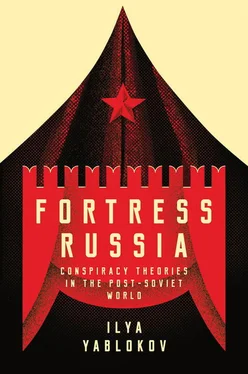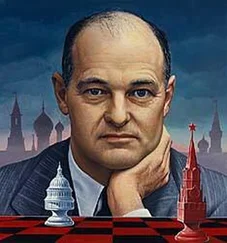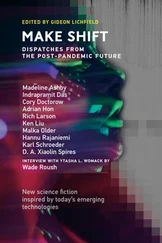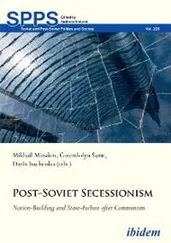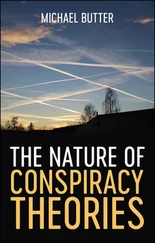Although the conspiratorial narratives of the elections in 2007 and in 2012 had certain similarities, the 2012 presidential campaign was distinguished by a vagueness in the pro-Kremlin speakers’ definition of the subversive ‘Other’. Between 2008 and 2011, as Vladimir Gel’man (2013, p. 5) notes, the number of groups unsatisfied with the regime was growing. People who were affected by the world economic crisis, and motivated by Medvedev’s calls for modernization, hit the streets to express their discontent with the status quo. The diversity of social and political groups disappointed with the prospect of Putin returning to the presidency made it difficult for the Kremlin to clearly and quickly identify the object of conspiratorial mythmaking. Consequently, diverse groups of people who protested about the rigged elections in December 2011 and questioned the stability of the regime were discursively united into a single group, ‘the people from Bolotnaia’. All of the members of this vaguely defined social group supposedly shared a hatred of Putin and had links to the West.
Sergei Kurginian, another prominent participant in the campaign, posited a division between ‘the pro-Western, conspiring minority’ and Russian patriots in a manifesto called, revealingly, Oni i My ( Them and Us ). The central argument of the manifesto defined the attendees of the first Bolotnaia rally and its leaders as agents of a ‘foreign evil will’ ( ispolniteli inozemnoi zloi voli ) which had been preparing for perestroika-2 . Kurginian drew a parallel with the last years of the USSR and Gorbachev’s failure to reform the country, which had resulted in economic collapse; and he accused Yeltsin of plundering the country in the 1990s. He directed his populist call to the economically worst-affected group of the population in the 1990s, the intelligentsia, many of whose representatives did not have high incomes, in contrast to the attendees of the opposition rallies, most of whom were said to have relatively high income (Volkov, 2012, p. 74):
So, THEY want the final breakdown of the country. If you wish it, go to THEIR rally. Support their fat bodies with your skinny hands. But THEY, after partitioning the country, will leave for foreign castles and villas. While you will not leave. So, is it worth going to THEIR rallies, supporting THEM? (Sut’ vremeni, 2011)
Kurginian’s acknowledgement of the justified ‘dissatisfaction of professors and doctors, workers and engineers, soldiers, teachers, agrarians’ with current governmental policies was clearly aimed at distinguishing the discontent of representatives of ‘real Russia’ from the dissatisfaction of leaders of the opposition movement. Avoiding references to post-election grassroots civic activity in the country, Kurginian associated the rallies for the most part with politicians from Yeltsin’s government, such as Nemtsov, and former tabloid celebrities, like Kseniia Sobchak. Their aim, according to Kurginian, was to destroy the country by manipulating ‘justified discontent’ with the political situation, as was also done in 1991 (Sut’ vremeni, 2011).
At the same time, pro-Kremlin spin doctors and journalists continued to portray the leaders of the opposition rallies as a ‘fifth column’ working for the US State Department. A substantial part of the conspiratorial narrative during this campaign was disseminated through television documentaries. The most notable example is NTV’s series of documentaries, Zagranitsa im pomozhet ( Abroad Will Help Them ) and Anatomiia protesta ( The Anatomy of Protest ). Each episode in these series summarized the various myths, forgeries and clichés of Russian conspiracy discourse of the 2000s, such as Russia being infiltrated by foreign agents, NGOs and oppositionists, and being financed by foreign governments hoping to destroy Russia and obtain control over its natural resources (CHP. Rassledovanie. Anatomiia protesta, 2012b).
However, the key aim of these documentaries was to lay the blame for electoral fraud on the anti-Putin opposition. Numerous videos were screened about vote-rigging engineered by foreign intelligence services. On the other hand, as early as 4 February 2012, the Investigative Committee of the Russian Prosecutor General’s Office declared that most videos about the Kremlin’s falsification of results during the 2011 parliamentary elections ‘contained elements of video editing’ and were later placed on US Internet servers (Channel One, 2012c). The fact that anyone in the world who had YouTube access could upload these videos was of no interest to those making these comments; their emphasis was on the fact that these particular YouTube servers were in the USA, and this suggested that anti-government criticism had been staged by the USA. Moreover, at the peak of the campaign, Stanislav Govorukhin, the chief of Putin’s campaign office, declared that the Internet was a scrapheap ( pomoika ) which belonged to the US State Department (NTV, 2012). Thus, the videos about electoral fraud, which were widely recorded and disseminated via the Internet by ordinary Russians, were interpreted as a part of a subversive American plan, rather than a grassroots initiative by Russian citizens calling for fair elections.
Although conspiratorial notions were placed in the public space, the policy of delegitimizing those opposed to Putin had a limited impact on public opinion. According to a poll conducted by the Levada-Centre in January 2012, only 13 per cent of respondents adhered to the idea of ‘Western sponsorship’ of the rallies (Levada-tsentr, 2012). Given this result, it might be concluded that although anti-Western conspiracy theories were a useful item in the Kremlin’s political toolbox, they only possessed a limited capacity. Their ability to polarize society was evident only when they were placed alongside other populist rhetoric which referred to current socio-economic and political problems. During the electoral campaign, the authorities aggressively used anti-Western conspiracy notions to achieve a short-term mobilization of all potential supporters. However, the division of Russian society into the ‘people’, represented by Putin, and a mixed community of protesters supposedly linked to the West, was used to channel away from the Putin regime the dissatisfaction of large numbers of Russian citizens with the economic and social inequality in the country. Alarmist conspiracy theories about a ‘fifth column’ supported the populist claim about the preservation of existing stability, and were used to bring about the swift mobilization of those voters who were financially dependent on the government.
Michael McFaul: ‘Ambassador for Colour Revolutions’
A comment addressed to Putin by US Senator John McCain that the Arab Spring ‘is coming to a neighbourhood near you’, and Secretary of State Hillary Clinton’s ‘concerns about the conduct of the election’, helped to substantiate conspiracy fears (Spillius, 2011; Labott, 2011). In response to international criticism, Putin stated that Clinton’s words had no factual basis, but they set the tone for some ‘figures within the country and provided a signal. They [the members of opposition] heard this signal and, under the auspices of the US State Department ( gosdep ), started active work’ (Elder, 2011a). Hence, the notion of gosdep (an acronym of gosudarstvennyi departament ) – another conspiratorial metaphor – became a central feature in the body of conspiratorial mythmaking related to the 2011–12 electoral period.
In Russia’s official discourse, the new US ambassador to Russia, Michael McFaul, who arrived in January 2012, came to symbolize American conspiracy against the country. His meetings with leaders of the opposition allowed pro-Kremlin journalists and writers to claim that he had arrived in Russia to supervise a colour revolution; indeed, he was soon given the nickname ‘Ambassador for colour revolutions’ (Bohm, 2014). The image of the new Ambassador which appeared in the Russian media provided an important conceptual connection between the opposition rallies, the notion of the colour revolution, and the collapse of the USSR.
Читать дальше
Конец ознакомительного отрывка
Купить книгу
